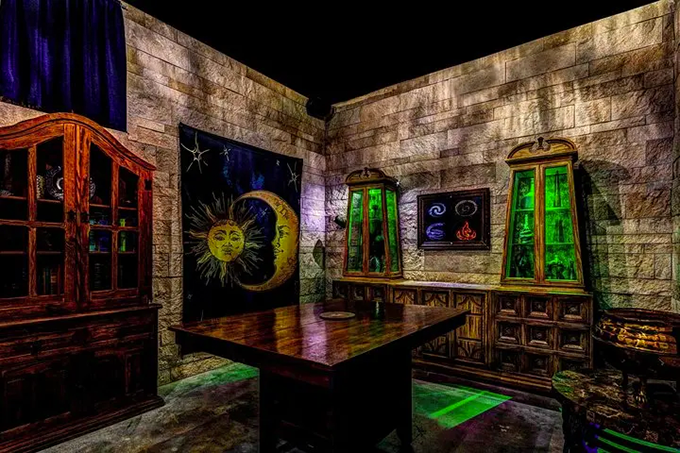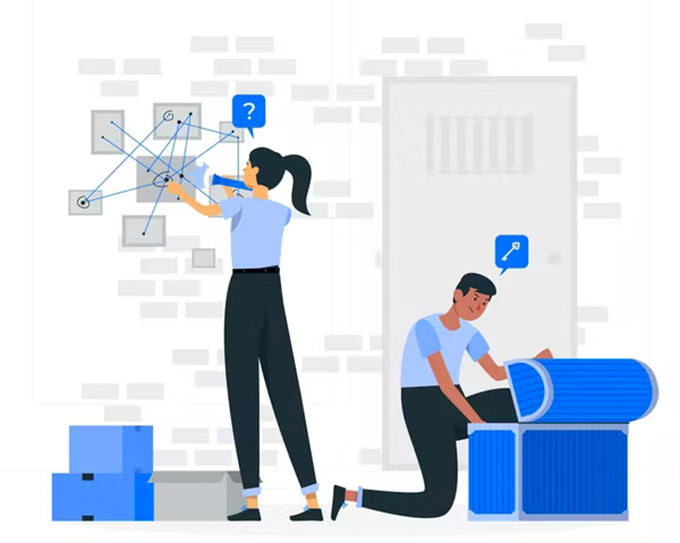
An escape room ( escape room , literally, in Spanish) consists of one or more physical or virtual rooms from which the participants must escape by solving puzzles, mysteries or finding clues.
Its current boom has been transferred to the educational context in all its areas ( nursery , primary , secondary , vocational training and university ) because it is an attractive and very playful experience that captures the student’s attention in a different way. Teachers are showing increasing interest in this type of experience, born outside the classroom as leisure initiatives, and transferred to the physical, virtual or hybrid classroom.
Thus, you can find numerous academic publications that have come to light in recent years, in addition to courses, workshops, conferences and books ( Challenge in the classroom , In class it is played or Escape Room Education ).
However, designing them requires an investment of time and effort to learn how to use the tools to do so.

The importance of the common thread
When designing the escape room , the teacher has to ask himself several questions. The first of these will be to determine the common thread, the story on which the enigmas will be based: the more interesting, close or attractive it is for the students, the more they will be involved in the activity.
An effective way to start the challenge is through a video that introduces the story. But logically, the theme must also be related to the contents of the subject.
- If it is the subject of Spanish Language, we can frame the narrative in the need to save the world from the bad punctuation and spelling that invades the media.
- If the subject is, for example, Machine Translation, you can start with a story related to the invasion of robots that will replace the human translator in their work as translators.
- It is also possible to set the game in an alien invasion that threatens to send a deadly virus.
Four very well chosen puzzles
One of the most important steps has to do with the selection of the activities that will constitute the enigmas (it is recommended that there be no more than four, so that the duration of the game is approximately one hour).
It will also be necessary to determine the level of difficulty: not too demanding, so as not to frustrate the participants, but difficult enough to maintain interest. Clues can be incorporated through which the teacher can provide timely help.
Equally important is the role of the reward: here the teacher’s imagination comes into play. Some ideas: a virtual certificate, a link to a resource bank that may be useful for class content or the possibility of raising a grade.
What props will we need?
First of all, we will have to take into account in which environment we will carry out the experience. If it is a face-to-face environment, we will find a wide variety of materials that will help us turn the classroom into a games room:
- Padlocks or boxes.
- Ultraviolet light.
- Invisible ink pens.
- encrypted text .
Creating an escape room for the virtual environment is also possible and, for this, we have web resources that make our lives easier. Encrypted PDFs , hieroglyphs, puzzles , virtual locks or even a series of templates that the Sandbox Education team makes available to us and that can make it easier for us to create our gaming experience.
Collaborative Templates
Other teachers make templates made or tested by them available to the educational community: Norberto Cuartero , Miguel Ángel Azorín , Jessica Martos , Silvia Valenciaga , Guille Buedo , Adrián Fernández , Dácil González , David Ruiz , Sara Ovejero , Fernando Martí , Jero García , Clara Cordero and Alfonso Nàcher , among many others.
How to get everyone to participate?
If the game is face-to-face, doing the activity in a group is much more motivating for the students and they can even help each other.
In the virtual versions, it is convenient to give the possibility of carrying out the activity asynchronously and, therefore, individually. The experience is just as enriching and motivating.
However, some published studies in this regard also warn of the risk that some students, who are not used to working with a time limit and competing with others, may feel marginalized or frustrated.
If we want to avoid that nervousness, we always recommend taking into account the number of missions and challenges that we propose, as well as their difficulty. The more difficult it is to pass the tests, the easier it is for students to become frustrated and the game to stop being interesting and motivating. eye! Being too easy does not guarantee success either, since it can become boring and very easy to overcome.
The teacher has to analyze the group, their interests, the subject in which they want to propose the escape room , create an attractive story, choose the appropriate environment in which it will be carried out, do tests beforehand and offer help during the game, since either in person or virtually, so they can move forward.
The experience allows students to enter a parallel world, where they consolidate content and deal with it in a different way. This increases motivation and interest in the subject.
That is why it is highly recommended to try it, starting with something simple that breaks the monotony of the classroom and allows us to observe the reaction of the students.
Author Bios: Alexandra Santamaria Urbieta is Professor at UNIR, International University of La Rioj and Elena Mayor Penalver wh is Full Professor of the University of English Philology at the University of Alcalá
